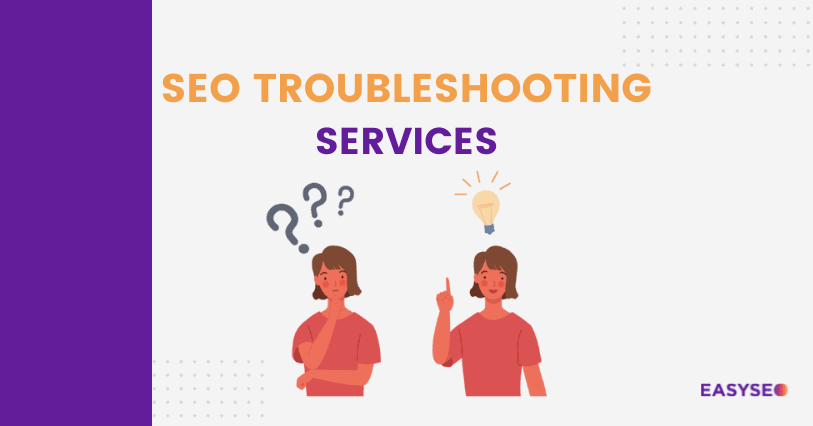
Are you tired of struggling to get your website to rank highly in search engine results? Are you frustrated with low traffic and poor performance? EASYSEO troubleshooting services will help.
If you are sick of your website being stuck on page 10 of Google my team of expert SEO professionals will give you the inside scoop on how to fix it. We’ll conduct a comprehensive audit of your website and pinpoint any technical issues, content problems, or other factors that are holding you back from top search engine rankings.
Then, EASYSEO team will develop a custom plan to address those issues and optimize your website for maximum search engine visibility.
Say goodbye to page 10 and hello to page 1 with our top-notch troubleshooting services.

Why I can talk about SEO troubleshooting?
My name is Vladimir and I’ve been in SEO for 10+ years.
I’ve seen small, medium and enterprise projects being stuck. There can be numerous reasons including poor onpage performance or even small technical issues preventing a project from getting to first page.
I personally will take a look at every project that comes for SEO troubleshooting. I will find the problem and tell you exact steps to fix it.
Don’t let poor SEO hold your website back any longer. Contact us today to learn more about how our SEO troubleshooting services can help your business succeed online.
What is SEO troubleshooting
SEO troubleshooting is the process of identifying and fixing problems with a website’s search engine optimization (SEO). This can involve identifying and correcting technical issues, improving the quality of the website’s content, and making sure that the website is properly optimized for relevant keywords and phrases. Some common problems that may require SEO troubleshooting include:
- Low search engine rankings: If a website is not ranking as highly as expected for certain keywords, it may be necessary to troubleshoot the cause of the problem.
- Poor website performance: Slow loading times and other technical issues can affect a website’s search engine rankings and user experience.
- Lack of traffic: If a website is not getting the expected amount of traffic, it may be necessary to identify and fix any problems that are preventing it from ranking highly in search engine results.
- Duplicate content: Search engines may penalize websites that have large amounts of duplicate content, so it’s important to identify and remove any duplicate content on a website.
Steps of SEO troubleshooting
The steps for SEO troubleshooting may vary depending on the specific problems that a website is experiencing, but generally, the process can be broken down into the following steps:
- Identify the problem: Before you can begin troubleshooting, you need to identify the specific SEO problems that you are trying to solve. This might involve analyzing the website’s search engine rankings, traffic, and performance using tools like Google Analytics and Search Console.
- Conduct a thorough audit: To identify the root cause of SEO problems, you’ll need to conduct a thorough audit of the website. This might involve analyzing the website’s structure, content, and technical SEO factors.
- Analyze the competition: It can be helpful to analyze the SEO strategies of your competitors to see what they are doing differently and to identify any opportunities for improvement.
- Develop a plan: Once you have identified the problems and potential solutions, you’ll need to develop a plan for implementing the necessary changes. This might involve creating new content, optimizing existing content, and making technical changes to the website.
- Implement the changes: After you have developed a plan, you can begin implementing the necessary changes to improve the website’s SEO. This might involve updating the website’s content, adding new pages, and making technical changes to the website.
- Monitor and measure results: Once you have made the necessary changes, it’s important to monitor and measure the results to see if the changes are having the desired effect. This might involve analyzing the website’s search engine rankings, traffic, and performance using tools like Google Analytics and Search Console.
- Continuously optimize: SEO is an ongoing process, so it’s important to continuously monitor and optimize the website to ensure that it remains competitive in the search engine rankings. This might involve making ongoing changes to the website’s content and structure, as well as adapting to changes in search engine algorithms.
To troubleshoot these and other SEO issues, it may be necessary to conduct a thorough audit of the website, analyze the website’s performance using tools like Google Analytics and Search Console, and make changes to the website’s content and structure to improve its SEO.

